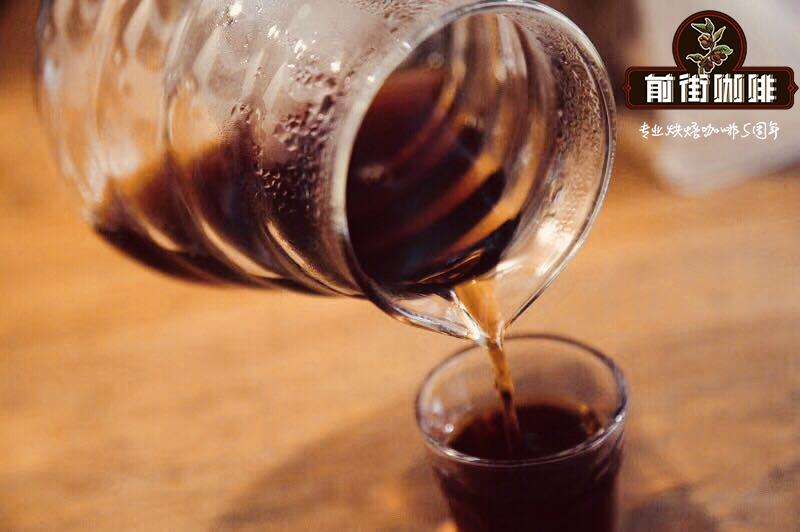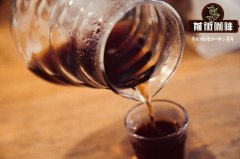What is the effect of roasting degree on coffee? Mantenin medium or deep which flavor is wilder?

Professional coffee knowledge exchange more coffee bean information please follow the coffee workshop (Wechat official account cafe_style)
Qianjie-brief introduction of roasting degree of coffee
We are going to do some articles on beans. It is very important to choose good beans. The choice of beans here refers not only to the quality of beans, but also to the degree of baking of beans. This is also something that many friends are not quite clear about. They do not know how to choose the baking degree of beans. OK, let's talk to you today about the baking degree of coffee beans. When you have to choose beans in the future, they will be more targeted. Now we know that there are eight kinds of baking: very shallow baking, shallow baking, micro baking, medium baking, medium baking, deep baking, French baking, Italian baking.
1. Very shallow roasting: the shallowest baking degree in all baking stages, the surface of coffee beans is light cinnamon, its taste and aroma are not enough, almost raw beans, this state is almost undrinkable. It is generally used for cup testing and seldom for tasting. It is not suitable for making coffee, and it is basically not available on the market.
2, shallow baking: very shallow baking degree, showing cinnamon color in appearance, the taste of raw beans is basically gone, and the aroma varies greatly according to different beans, with strong acidity.
3, micro-medium baking: slightly to moderate baking, heat and light baking is similar, the color is also similar, basically indistinguishable by color, in addition to sour taste, bitterness also appeared, the taste is good. The aroma and mellow degree are moderate and the acidity is strong. As we all know, Yega Xuefei is very suitable for this degree of baking.
4. Medium baking: it belongs to moderate micro-deep baking, which is slightly stronger than micro-medium baking, with a little strong brown color on the surface and strong bitterness. Coffee tastes sour and bitter, with good aroma and flavor, and is most often loved by people in Japan and Central Europe.
5. Medium and deep roasting: the most standard baking degree, with a balance of aroma, bitterness and sour taste, to which most beans will have a good flavor, and is one of the most suitable roasting degrees for making espresso.
6. Deep baking: slightly stronger than medium-deep baking, the color becomes quite dark, and the bitterness is very strong. The sour taste gradually fades away and is very suitable for making all kinds of iced coffee. Manning, which is very popular with Chinese people, is very suitable for baking to this extent. Similar to medium and deep baking, almost all the production methods can show its flavor very well.
7. French baking:
Belongs to the deep baking, the color is thick brown with black, the sour taste can not be felt, especially in Europe, France is the most popular, because the fat has infiltrated to the surface, with a unique flavor, in Europe, many beans are used to make coffee mixed with alcohol. Some beans at Starbucks are baked to this extent. It is baked so deep that its flavor can only be extracted by soaking.
8. Italian roasting: the deepest baking degree, the roasting degree before carbonation, there is a serious scorched taste, the concentration of caffeine is so high that most people can not accept it, there is a coffee called DeathWish is roasted to this degree.
Sumatra manning is a rare Arabica species. Planted on hillsides between 750m and 1500 m above sea level, the mysterious and unique Sumatra gives Mantenin coffee, coupled with a medium-to-deep roasting degree, adding a rich aroma, rich taste and strong flavor. Make it unique, with a hint of chocolate and syrup.
Knowledge: the source of aroma and flavor of coffee is highly volatile. So the longer the coffee beans are stored, the more aroma and flavor will be lost.
In short: Qianjie is a coffee research hall, happy to share the knowledge about coffee with you, we share unreservedly just to make more friends fall in love with coffee, and there will be three low-discount coffee activities every month. The reason is that Qianjie wants to make more friends drink the best coffee at the lowest price, which has been Qianjie's tenet for 6 years!
END
Important Notice :
前街咖啡 FrontStreet Coffee has moved to new addredd:
FrontStreet Coffee Address: 315,Donghua East Road,GuangZhou
Tel:020 38364473
- Prev

There are several kinds of coffee roasting degree what flavor can break out in the roasting degree of Manning coffee?
Professional Coffee knowledge Exchange more coffee bean information Please follow the front street of coffee workshop (Wechat official account cafe_style)-introduction to coffee roasting degree many people often batch deep-baked beans to useless, thinking that well-roasted deep-roasted beans are carbonization to mask the smell of rotten beans, such as tire smell, sundries smell, rotten smell and fishy smell. So, deep-roasted coffee is really nothing.
- Next

Roasting degree and characteristics of Coffee beans Blue Mountain Coffee is suitable for roasting degree is not bitter or sour
Professional coffee knowledge exchange more coffee bean information please follow the coffee workshop (Wechat official account cafe_style) front street-coffee bean roasting degree introduction light roasting LightRoast: coffee beans roasted to close to the first burst period, taste and flavor are insufficient, generally used for experiments, rarely used
Related
- Beginners will see the "Coffee pull flower" guide!
- What is the difference between ice blog purified milk and ordinary milk coffee?
- Why is the Philippines the largest producer of crops in Liberia?
- For coffee extraction, should the fine powder be retained?
- How does extracted espresso fill pressed powder? How much strength does it take to press the powder?
- How to make jasmine cold extract coffee? Is the jasmine + latte good?
- Will this little toy really make the coffee taste better? How does Lily Drip affect coffee extraction?
- Will the action of slapping the filter cup also affect coffee extraction?
- What's the difference between powder-to-water ratio and powder-to-liquid ratio?
- What is the Ethiopian local species? What does it have to do with Heirloom native species?

